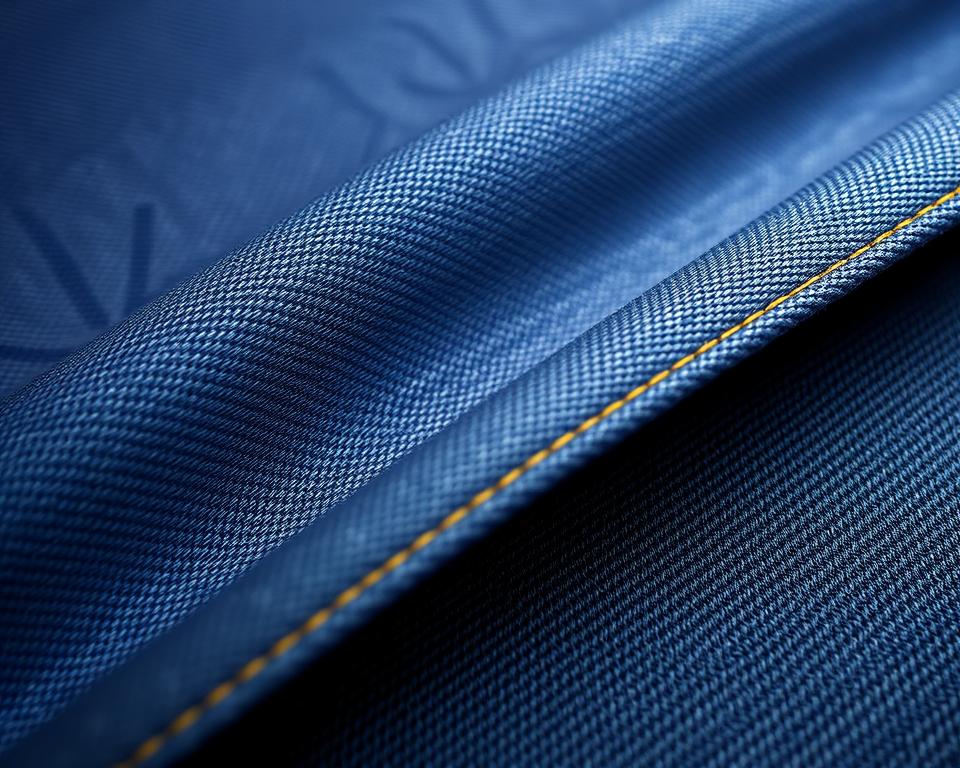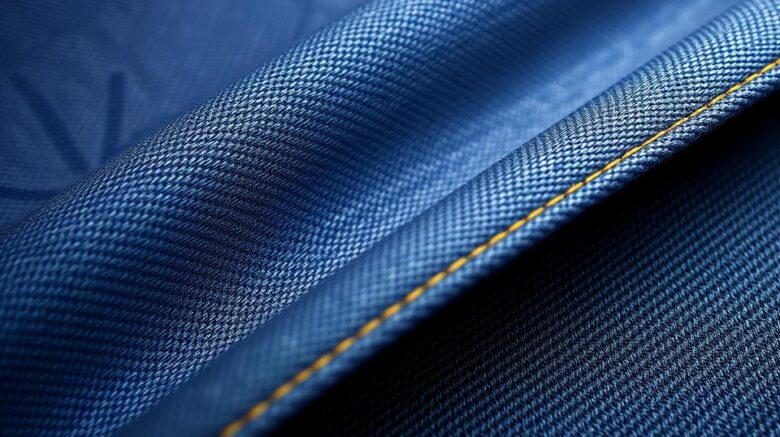Your Guide to High-Quality denim Selvedge Textile
Have you ever questioned the reason certain trousers feel as though they are made to last the ages? It’s all about the materials and skill. Take, for instance, the rising movement of high-end selvedge. It’s not merely ordinary fabric—it’s a testament to superiority and tradition.
Nowadays, increasingly more individuals are turning to these classic materials for their durability and iconic ewingfly denim allure. Whether you’re a do-it-yourself sewist or a denim aficionado, there’s a unique quality about using high-quality natural fiber and stitching. It goes beyond merely constructing trousers; it centers on fashioning something that tells a story.
Within Core Fabrics, we’ve selected a selection of 14.25oz organic cotton and elastic options. Such textiles are tailor-made for a spectrum ranging from raw jeans to couture jacket blueprints. Eager to discover the realm of exceptional fabrics? Let us delve in.
What Is Denim Selvedge Fabric?
What makes particular trousers set themselves apart with their unique, finished without extra steps edges? The answer is found in the selvedge denim, a premium fabric renowned for its robustness and retro charm. Unlike regular textiles, this fabric is crafted using traditional methods that have proven their worth.
Understanding Selvedge Denim
Selvedge denim is manufactured via old-style shuttle looms, which produce narrow widths of about 30-35 inches. They intertwine the fabric in a manner that ensures self-finished borders, often accented with a signature red line. This method confirms the material is firmly crafted and exceptionally sturdy.
Modern looms, in contrast, generate wider material but fall short of the comparable degree of skill. The imperfections in selvedge, like misaligned seams or inconsistent patterns, are celebrated as part of its charm. This ideology, known as “wabi-sabi”, honors the beauty of organic flaws.
The Making of Selvedge Denim
The creation of selvedge denim involves a detailed process. These looms cross the filling yarns in alternating directions, creating a compact and sturdy fabric. Unlike modern methods with modern looms, which focus on rapid output over durability.
Labels such as Karson Denim uphold time-honored Japanese craft practices from the 1990s. They deliberately incorporate anomalies to retain the true character of the material. All products is assessed on a 4-point system, guaranteeing it fulfills the top criteria of excellence.
| Characteristic | Selvedge Denim | Current Denim |
|---|---|---|
| Span | 30-35 inches | 60+ inches |
| Weaving Process | Classic Shuttle Loom | Modern Loom |
| Surface | Uneven, Imperfect | Consistent |
| Sturdiness | Exceptional | Moderate |
“The charm of selvedge lies in its imperfections—every imperfection narrates a tale craftsmanship and tradition.”
The Background of Selvedge Denim
Evolving from simple roots to international fame, the narrative of these materials is vibrant and motivational. Originally developed as durable workwear in 17th-century France evolved into a symbol of classic elegance and artistry.
Beginnings in Craftsmanship
The origin of this textile reaches back to Nîmes, France, where it was known as “serge de Nîmes.” First intended for workers, it was constructed with sturdy cotton and yarn. Its resilience rendered it beloved among laborers during the historic Gold Rush.
In the 20th century, it had become a cornerstone for pants. The shuttering of the Cone Mills White Oak factory served as a catalyst. This shift enabled Japanese artisans to restore classic fabric-making practices.

Evolution in Modern Denim Production
After World War II, Japan developed a deep appreciation for old-school American culture. Craftsmen restored antique looms to manufacture genuine reproductions. This devotion to craftsmanship secured the survival of selvedge as a niche product.
Currently, breakthroughs from Italy and Turkey have introduced environmentally conscious combinations and elastic variants. These advancements have expanded the attraction of this everlasting textile. Here at Core Fabrics, we gather worldwide, from Montréal to Asia, to offer you the finest standards.
“The legacy of selvedge is a tribute to the enduring value of craftsmanship and legacy.”
Why Choose Selvedge Denim?
Why does selvedge denim shine in the realm of top-tier materials? Its distinct attributes and exceptional longevity have made it beloved among aficionados and designers alike. Whether you’re making jeans or a sharp jacket, this material provides a mix of tradition and contemporary charm.
Distinctive Attributes of Selvedge
Selvedge denim is known for its firm interlacing, which enhances durability and wear patterns. Unlike standard materials, rainbow selvedge denim is produced using traditional shuttle looms, creating a denser and extra robust fabric. Such a process guarantees that each piece has a unique texture and personality.
Key features include:
- Coarse, stiff raw denim offers a contrast to pre-washed comfort stretches.
- Through sanforization, sizes become reliable, while untreated fabrics provide a dynamic fitting process.
- Variants include 9.5oz Eco Finish to 14.25oz Organic, catering to different needs.
Durability and Longevity
One of the key attributes of selvedge denim is its longevity. The tighter weave not only increases durability but also allows for distinctive color fades over time. This makes it a valuable investment for those in pursuit of timeless pieces.
Important aspects:
- Mid-weight fabrics from 12oz to 14oz work well for tailored jackets and evolving jeans.
- For classic jean longevity, the 14.25oz True Indigo is a top recommendation.
- Sustainable variants such as recycled cotton combined with indigo blends enhance eco-friendliness.
Within our range at Core Fabrics, diverse choices cater to distinct demands. From raw to sanforized, each piece is crafted to deliver exceptional quality and value.
Comparing Selvedge and Wide Denim
For making robust and fashionable apparel, the decision of material plays a crucial role. Among the prevalent selections are selvedge and wide denim, both offering different features. Understanding their differences can help you choose the right one for your project.
Key Differences in Weaving Techniques
Selvedge denim is produced using traditional shuttle looms, producing narrow widths of 30-35 inches. This selvedge denim jacket process forms tightly woven edges, often marked by a characteristic red line. Wide denim, on the other hand, uses modern projectile looms, producing spans of 60+ inches.
Shuttle looms are slower, producing about 3 meters per minute, while projectile looms can produce up to 30 meters per minute. Such speed differences influence both the price and the finish of the outcome.
Advantages and Disadvantages
Selvedge denim is renowned for its high-end construction and robustness. Its slender dimension makes it ideal for projects where exposed edges or decorative patches are required. However, it can be pricier, typically around $23 per meter.
Wide denim is more cost-effective, typically costing $8 per half-meter. Its wider width cuts down on scrap, well-suited to large projects like interior décor projects. However, it does not feature the unique edge finish of selvedge.
| Characteristic | Selvedge Denim | Wide Denim |
|---|---|---|
| Width | 30-35 inches | 60+ inches |
| Technique | Classic Shuttle Loom | Contemporary Projectile Loom |
| Output | 3m per minute | 30m/min |
| Cost | $23 per meter | $8/half-meter |
For defined borders as seen in Grainline Thayer jackets, selvedge is favored. Conversely, wide denim is ideal for extensive projects due to its efficiency. Evaluate your project specifications to choose wisely.
How to Use Selvedge Denim
Working with premium materials can elevate your sewing projects to the next level. Whether you are creating trousers, jackets, or skirts, grasping fabric quantities, proper sewing methods, and maintenance guarantees a polished result. We will examine how to make the most of this everlasting fabric.
Yardage Needed for Jeans and Jackets
Determining the proper yardage is key to a successful project. For men’s jeans, you’ll need about 3-3.3 yards, accounting for potential defects and shrinkage. Trucker-style jackets generally demand about 3.3 yards, while skirts can be made with just 2 yards.
Creative pattern placement can help manage imperfections in the material. Rather than avoiding imperfections, incorporate them into your pattern for distinctive style.
| Garment | Required Yardage |
|---|---|
| Men’s Jeans | 3 to 3.3 yards |
| Trucker Jacket | 3.3 yards |
| Skirt Item | 2 yards |
Advice for Sewing and Longevity
The correct gear and skills secure a refined outcome. Choose #70 to 110 needles and machine attachments designed for heavy materials. Use Gütermann rPET thread for effective contrast stitching.
Here are some additional tips:
- A tailor’s clapper helps deliver defined creases without unwanted shine.
- Core Fabrics provides denim kits with topstitch thread, rivets, and 9mm buttons for that expert touch.
- Structured edges, essential for jackets, are best achieved with selvedge.
Maintaining your pieces properly increases their longevity. Wash sparingly and air dry to maintain the material’s integrity. With these tips, your projects will stand the test of time.
The Bottom Line
Using superior fabrics goes beyond mere durability—it’s about instilling personality. Selvedge denim exemplifies this ideology, merging artisanal charm with long-lasting quality. Be it crafting jeans or tailoring a refined jacket, each stitch narrates a tale.
At Core Fabrics, we make it easy to explore your creativity. Our swatch service lets you touch and test the fabric before deciding. Additionally, benefit from complimentary shipping on orders exceeding $150 USD throughout North America.
Eco-friendly mixtures and classic washes are paving the way for the next generation of cotton fabrics. They open fresh avenues for merging sustainability with chic style.
Ready to dive into the world of premium materials? Shop now and discover the value of crafting with purpose. Your future project might just be that lasting masterpiece.
